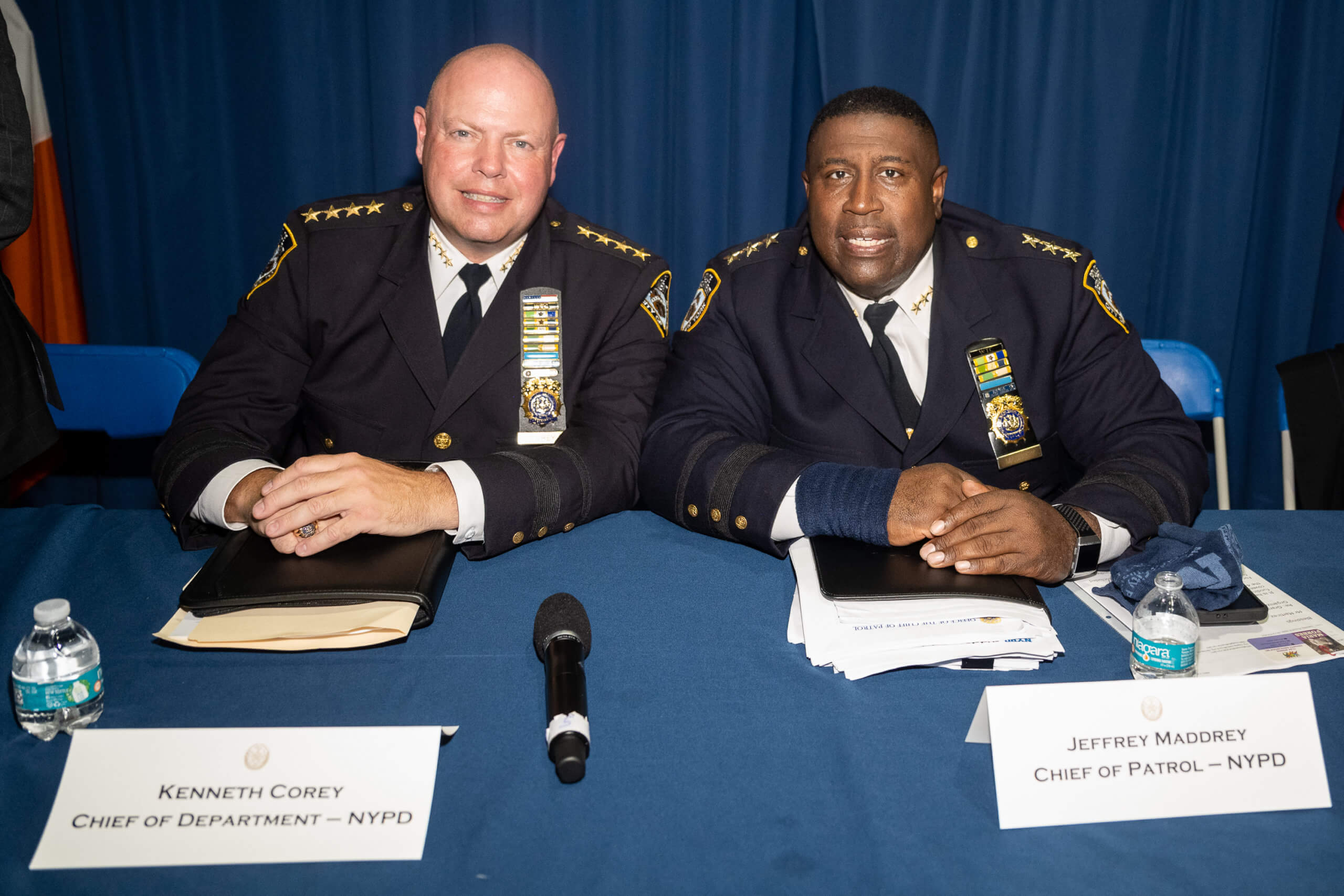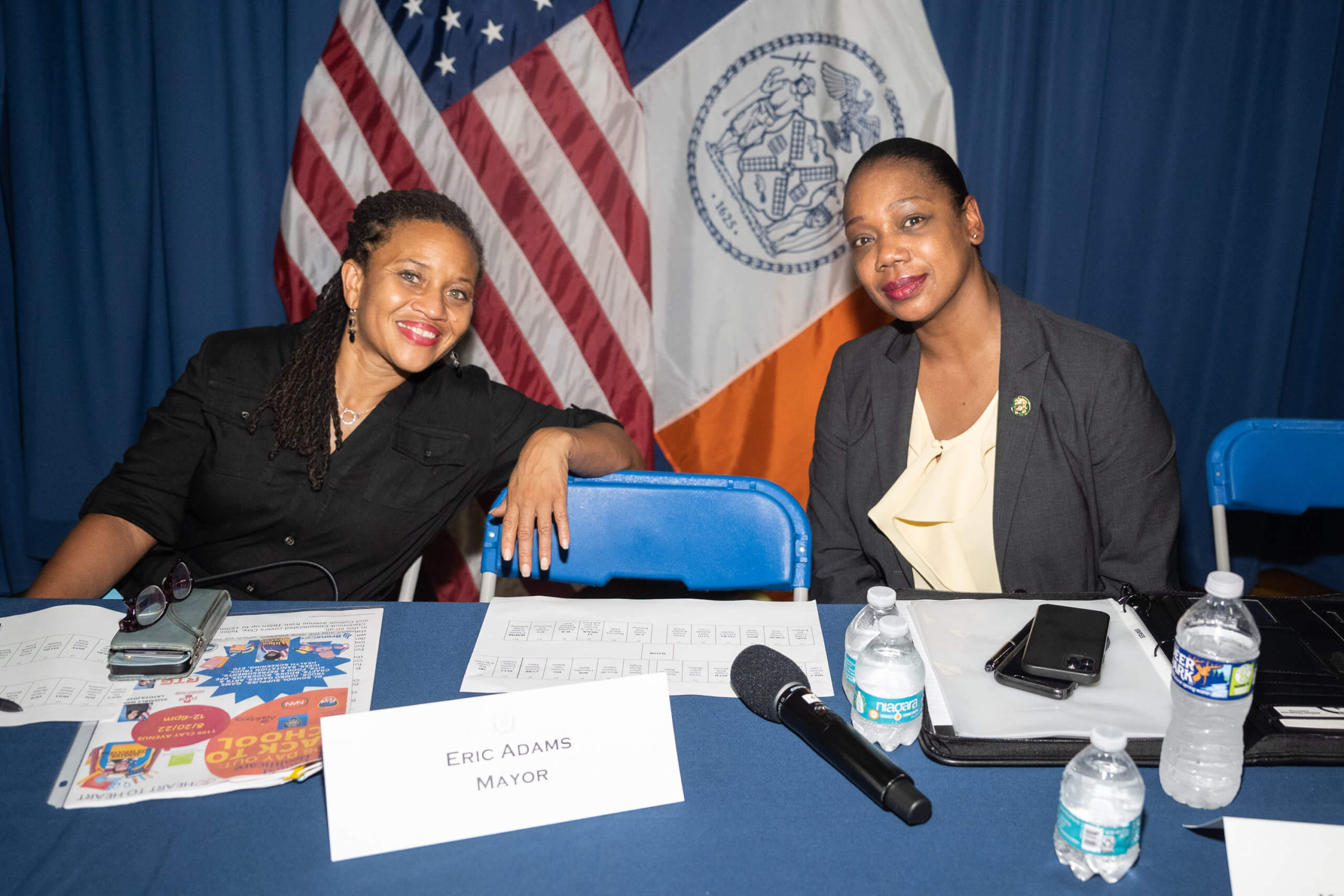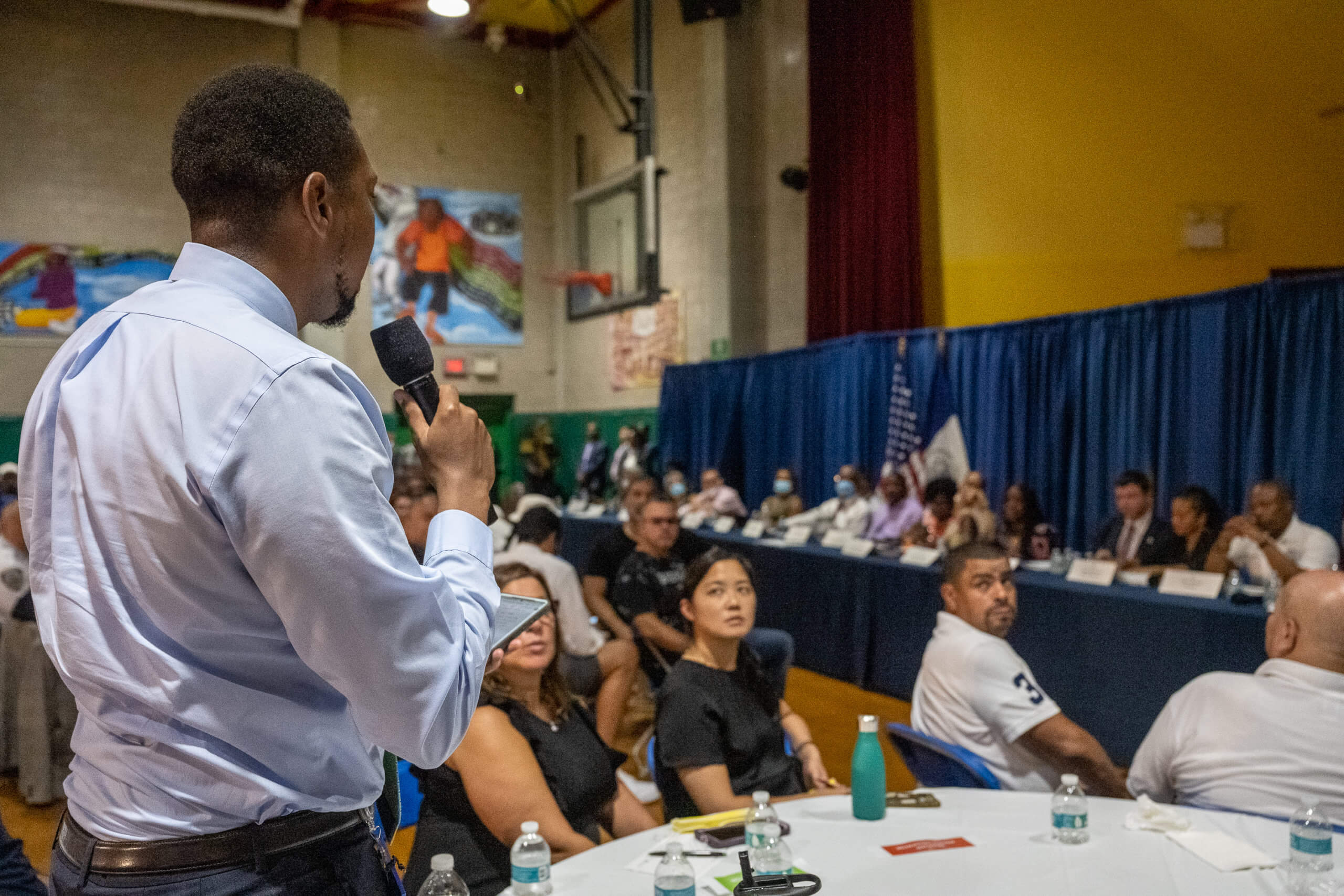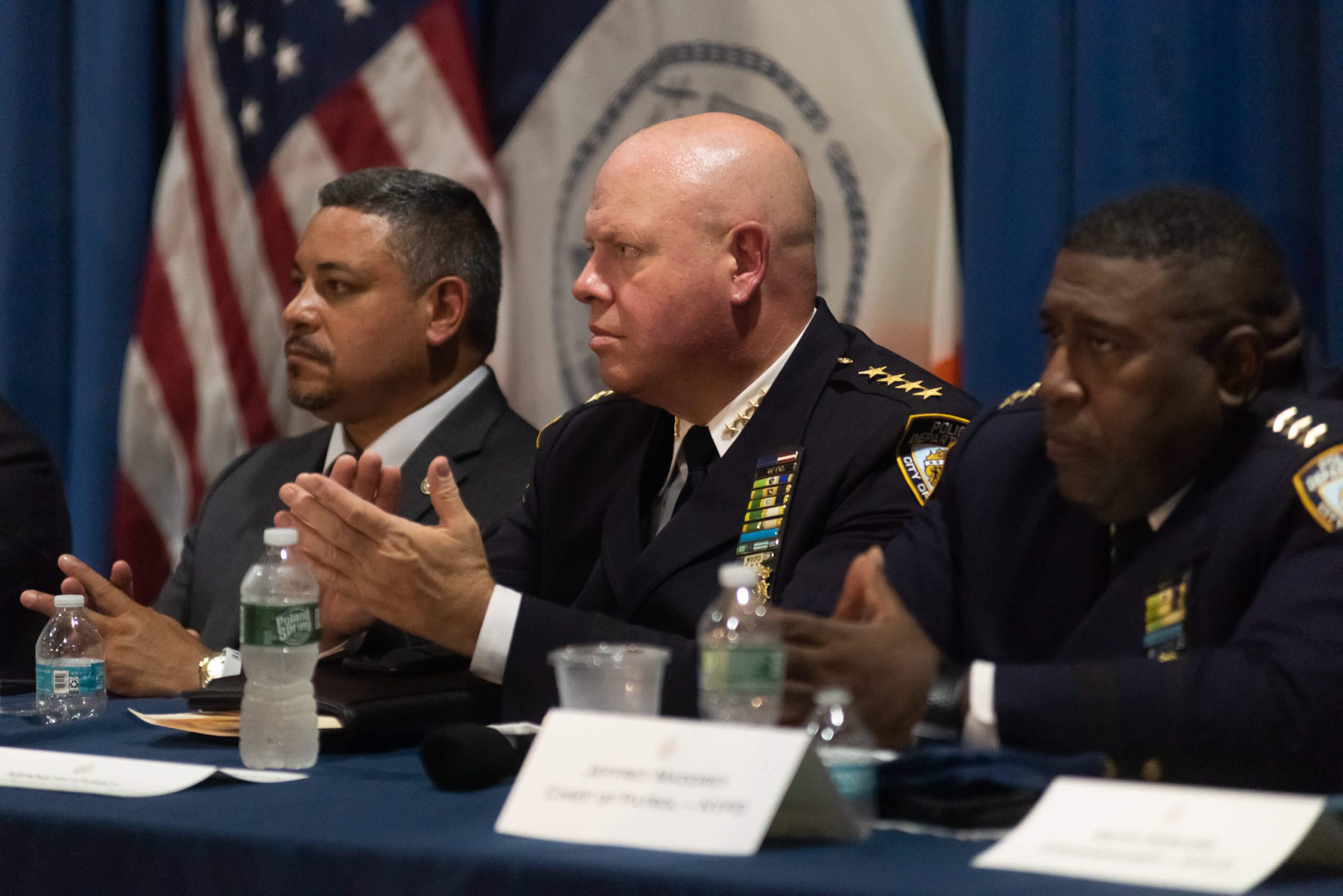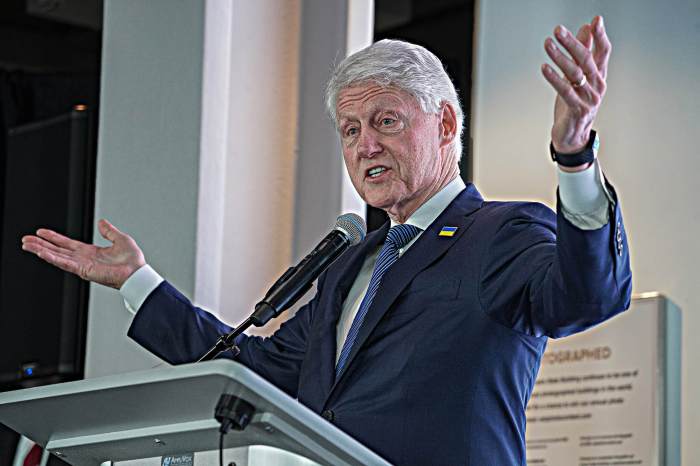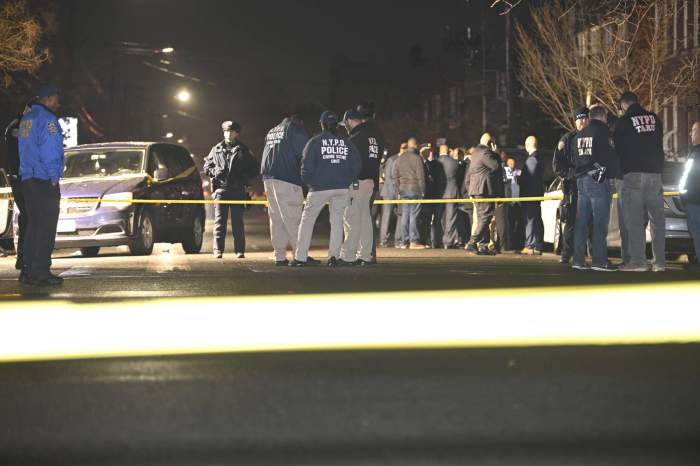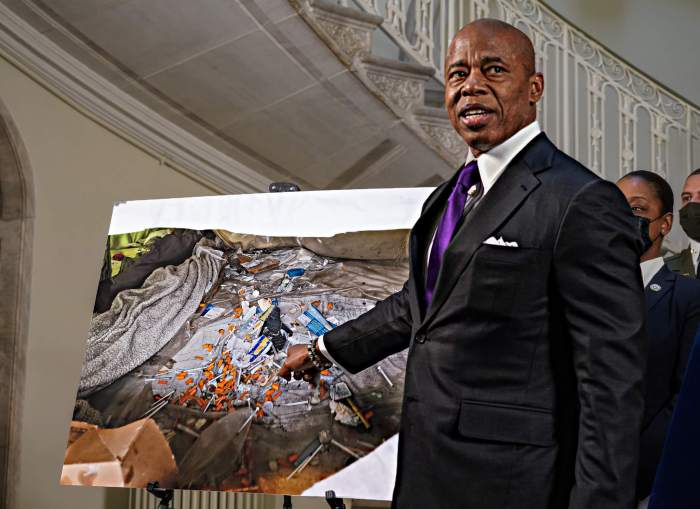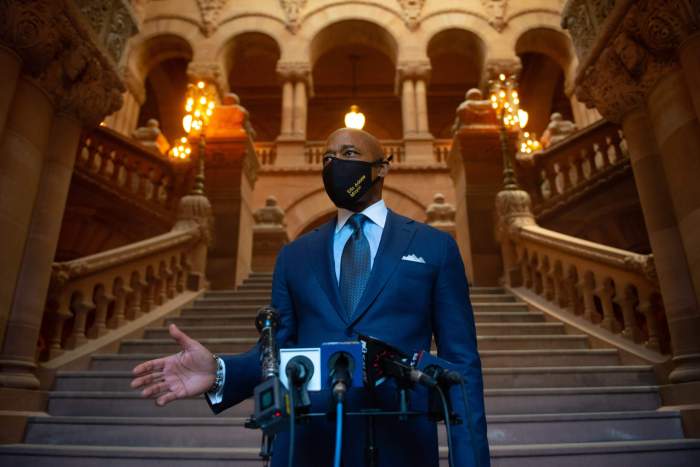Mayor Eric Adams held his third community conversation on public safety at the Bronx’s Police Athletic League-991 Longwood Avenue- on Tuesday evening. Over a hundred people, including community leaders, NYPD representatives, and elected officials, gathered in the sweltering gymnasium because the air conditioner had broken down.
Flanked by Deputy Mayor Sheena Wright to his right and NYPD Commissioner Keechant Sewell to his left, Mayor Eric Adams opened the conversation by pointing out that his diverse leadership team “looks like the City of New York.” However, he also acknowledged that despite all the successes of his administration thus far, the one thing that “sucks the air out of the room of our success in this administration is public safety, crime.”
One of the many questions posed addressed the issue of recidivism. The mayor explained that his administration’s focus was on intervention with the help of neighborhood safety teams zeroing in on guns and gun violence.
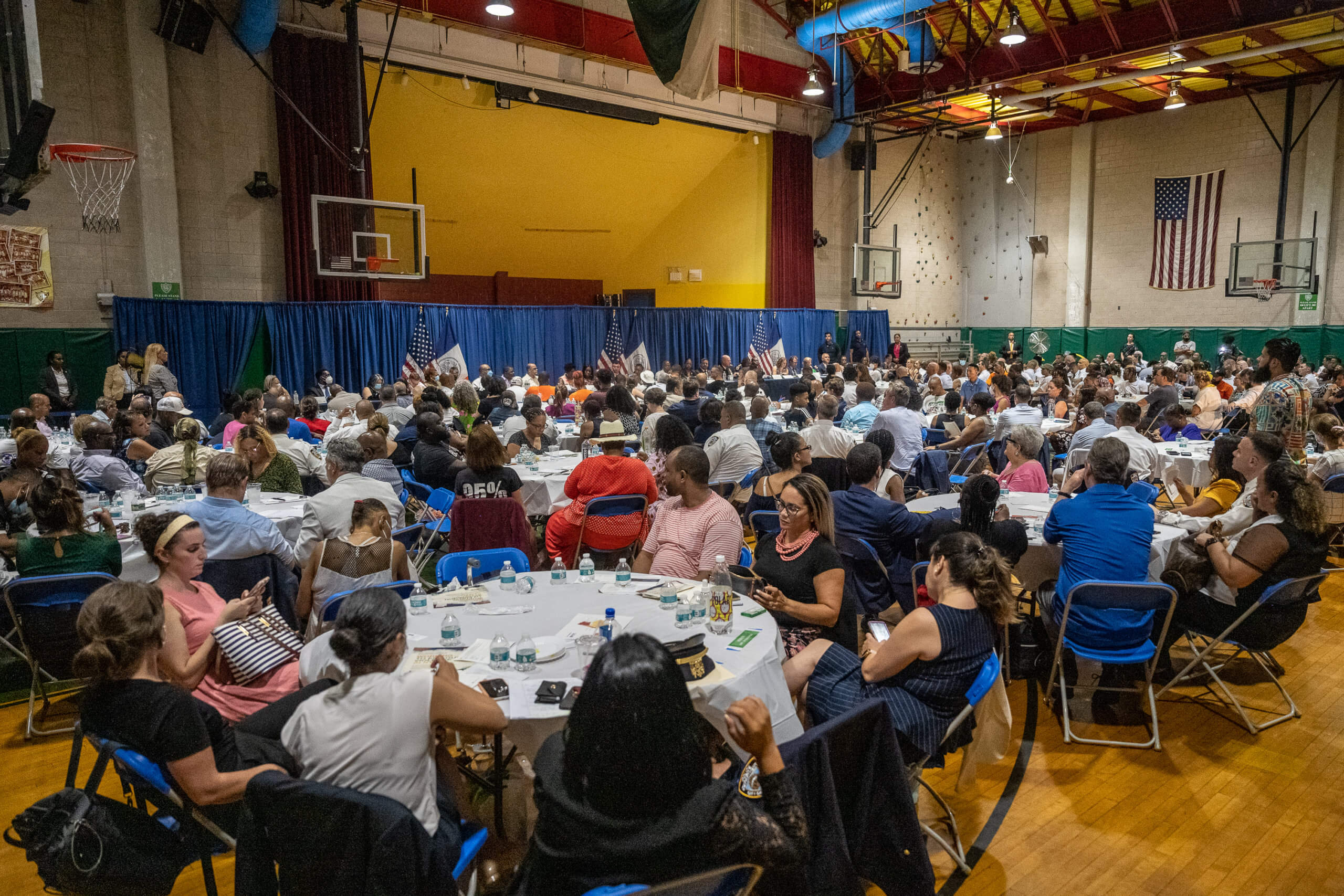
“Intervention is what we need to do right now. There are too many guns on our streets. Too many innocent people are being shot by just walking the street,” the mayor said.
However, he emphasized that the larger platform was prevention, and Deputy Mayor Sheena Wright said that the administration would double down on several strategies to prevent recidivism.
“There are programs and initiatives that come out of the Mayor’s Office of Criminal Justice and the Department of Probation that give people who have committed crimes additional support so that they don’t go back to commit more crimes,” Wright explained.
She also pointed out that they worked with New York City Schools Chancellor David Banks to help at-risk students with mentoring programs, social programs, and employment opportunities. At the same time, the NYPD Commissioner identifies the precincts with the highest level of gun violence, so resources go directly to those communities.
“It’s precision,” Wright said. They [NYPD] do precision policing. We’re trying to do precision intervention.”
The mayor added that the recidivism rate of young people who had mentors was dismal compared to those who didn’t.
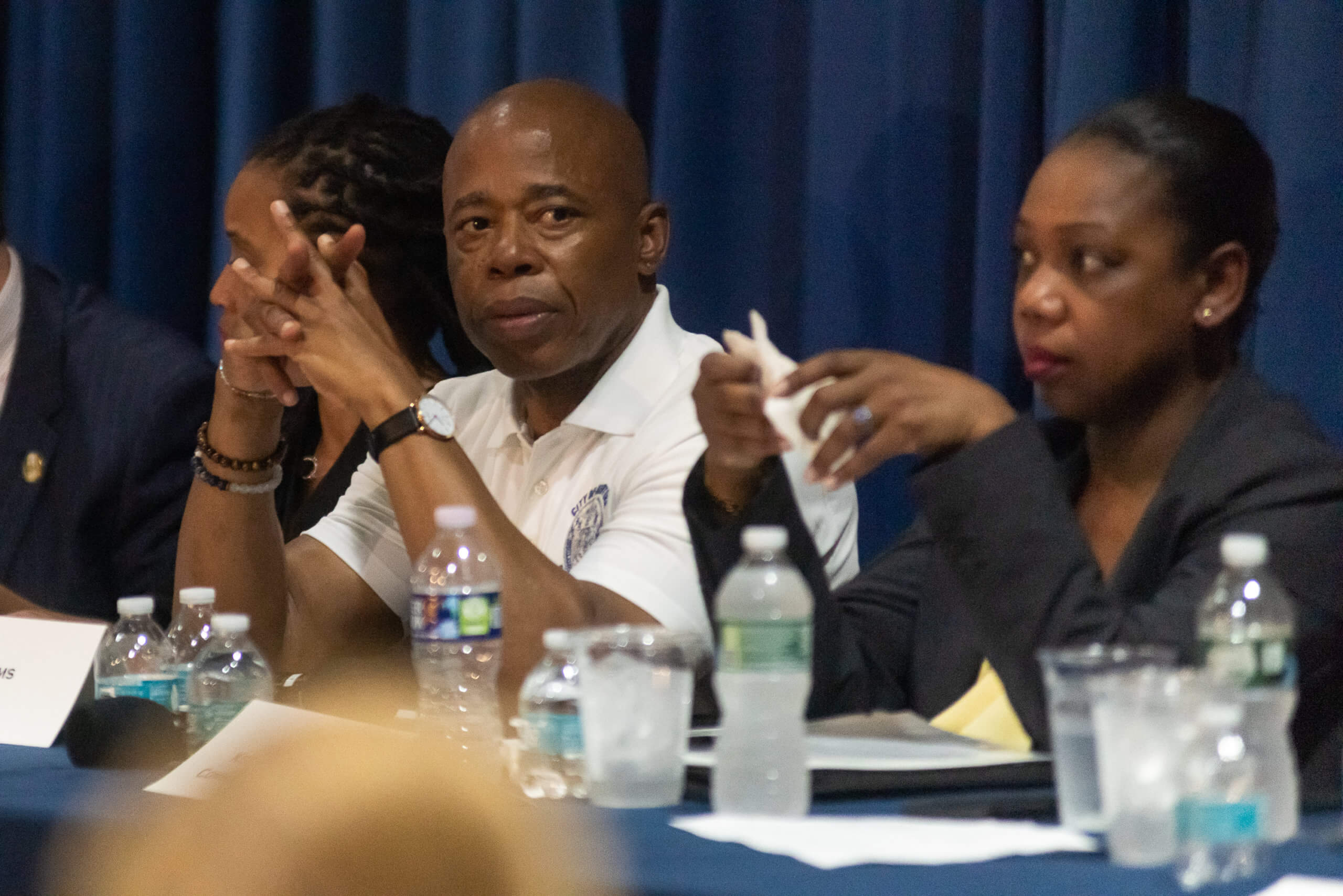
“So that’s how you stop the revolving door,” Adams said. “You do it early. You identify who needs the assistance, and you do it in a precision way.”
A Bronx resident pointed out that the Bronx “was always last in a lot of variables” and how the administration would ensure that the borough would receive resources to support small businesses, schools, and houses of worship.
Adams touted that he had visited the Bronx more often since he became mayor than previous administrations and was “laser-focused” on the Bronx, making major investments in Hunts Point and bringing high-speed broadband Wi-Fi to the borough.
Commissioner Sewell and Chief Maddrey chimed in on quality of life offenses like open drug use, secondhand marijuana smoke, illegal vendors, and dirt bikes.
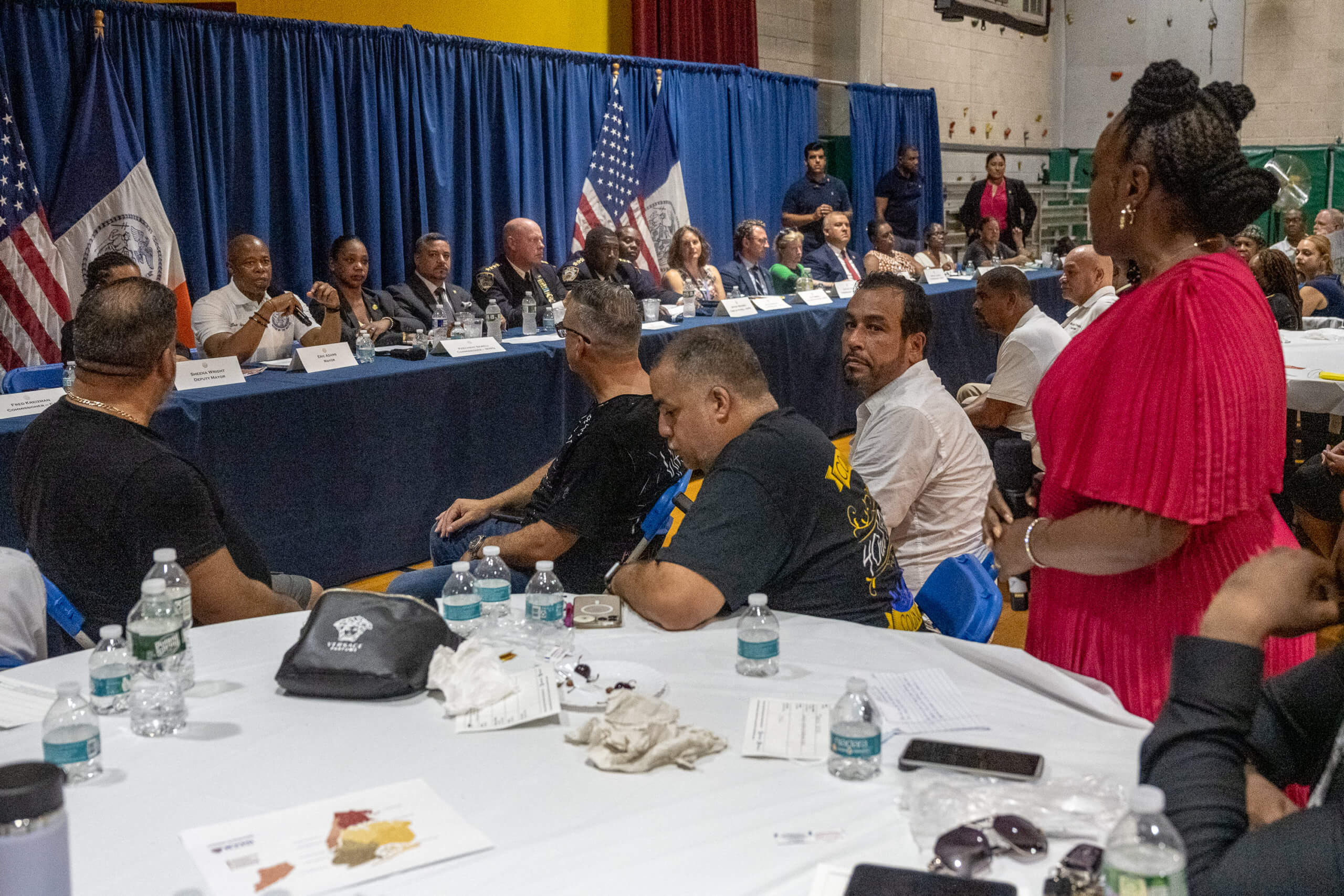
Sewell pointed out that issues like loud parties, marijuana smoking, and playing dice on the corner could lead to more serious offenses and that they were addressing these concerns.
“If I can stop a game that’s becoming disruptive; if I can stop a house party that’s too loud, maybe a shooting can be prevented,” Sewell said. “Not in all cases, but in some. It really comes down to how comfortable you feel walking down the street. Nobody wants to go to a store where there are people hanging out in front of it, and in some ways, they’re intimidating.”
NYPD Chief of Patrol Maddrey said that since his office started “Operation Rida (Removing Illegal Dirt Bikes and ATVs), they have confiscated and destroyed around 800 to 900 bikes. But he urged the public to reach out to NYPD community affairs and report any dirt bikes sightings.
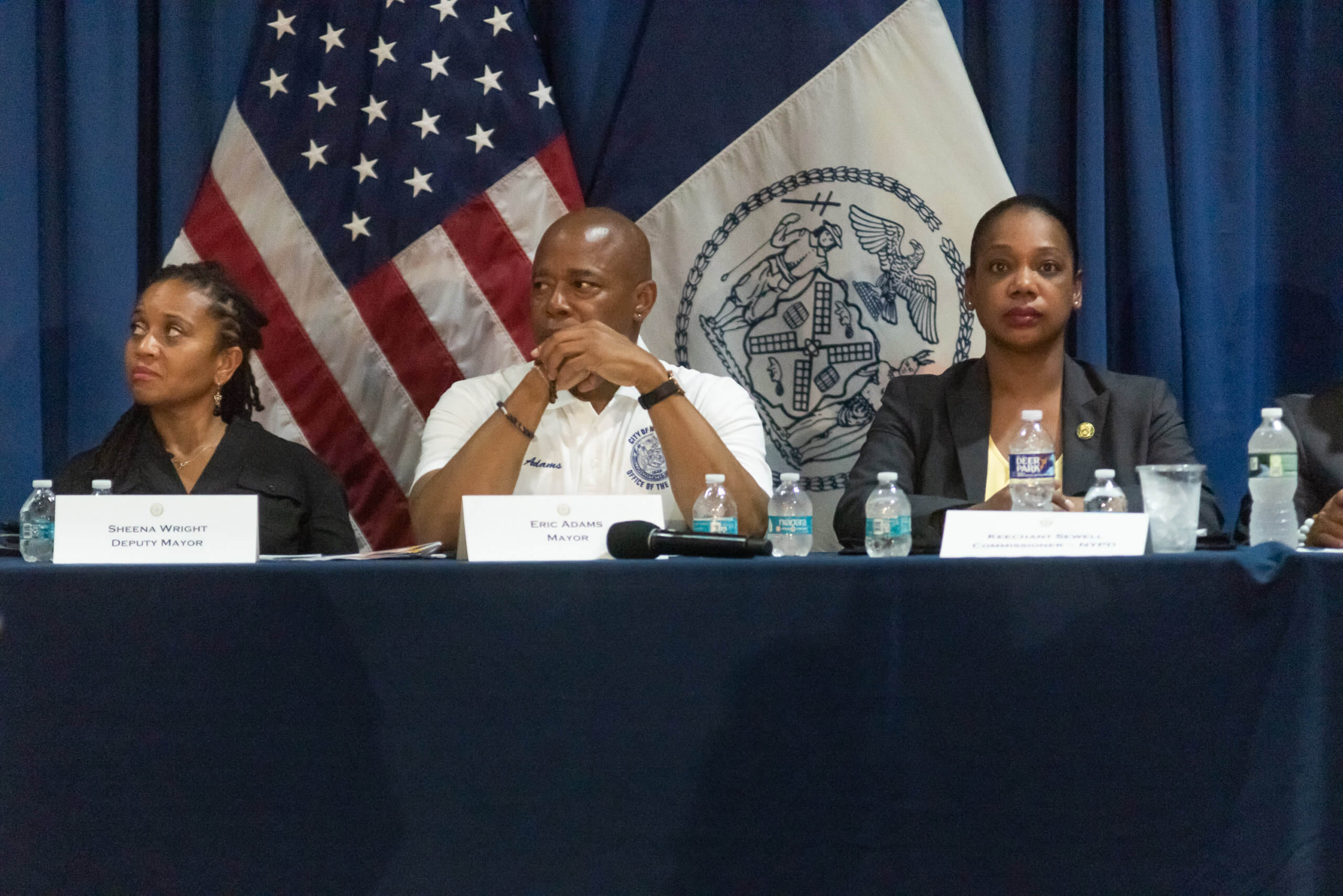
“We’re moving them heavy, but it seems like as much as we take them, they keep coming back,” Maddrey said. “Let us know what activity is occurring. And we will respond accordingly. And we will remove those bikes.”
The mayor added that they also found illegal guns in some of the confiscated dirt bikes.
“When you don’t deal with the quality of life issues, they turn into taking lives,” Adams said. “That’s why we’re not going to sit back and just watch every day people who want to live in clean, safe communities have to deal with the disruption.”
